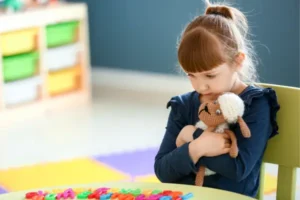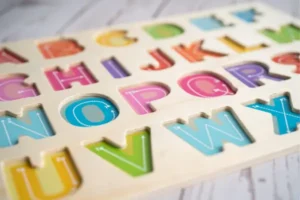Overview of the Topic
Language development is a crucial milestone for all children, but for those with autism, it often presents unique challenges. Many children with autism experience speech delays, difficulty understanding social cues, or struggles with verbal communication. These challenges can affect their ability to express needs, engage with others, and navigate everyday situations. Interactive toys play a significant role in addressing these challenges by offering hands-on experiences that encourage language and communication skills in a fun, supportive way. By engaging multiple senses and prompting verbal responses, these toys help bridge communication gaps and foster social interaction.
Purpose of the Article
This article explores five interactive toys that have proven effective in enhancing language skills in children with autism. Each toy is reviewed for its features, how it supports communication, and how it can be integrated into your child’s daily routine.
Why It Matters
Interactive toys provide valuable opportunities for children with autism to practice communication in a low-pressure, engaging environment. These toys promote language development, encourage social interaction, and stimulate cognitive growth. By making learning fun, interactive toys can significantly improve a child’s ability to connect with others and express themselves more confidently.
The Importance of Language Development in Autistic Children
Communication Challenges in Autism
Children with autism often face communication barriers such as speech delays, non-verbal communication, or difficulty understanding social cues like body language and facial expressions. These challenges can lead to frustration, social isolation, and difficulties in everyday life. Language is essential for social connection, so learning to communicate is critical for children with autism.
Benefits of Improving Language Skills
Enhancing language skills can profoundly impact a child’s ability to engage with others. It improves self-expression, allowing children to share their needs, emotions, and thoughts more clearly. Effective communication helps build stronger social relationships, as children with better language skills are more likely to interact with peers and family. Furthermore, improved language abilities promote greater independence, empowering children to navigate their environment with confidence.
How Interactive Toys Help
Interactive toys are an excellent tool for promoting language development. They engage children through verbal and non-verbal communication by encouraging them to repeat words, identify objects, and engage in role-playing scenarios. By making language learning fun and interactive, these toys offer children a safe and enjoyable space to practice language at their own pace, supporting both verbal expression and social interaction.
Key Features to Look for in Interactive Toys for Language Development
Engagement with Multiple Senses
Toys that stimulate multiple senses—such as tactile, auditory, and visual—are especially effective in promoting language learning. Sensory-rich toys, like textured or light-up toys, help connect words to sensory experiences, enhancing both language comprehension and expression.
Encouraging Interaction and Response
Toys that prompt children to respond, repeat, or imitate help reinforce language skills. Toys that ask questions or encourage verbal responses (e.g., “What color is this?” or “Can you say ‘hello’?”) motivate children to practice speech, which builds fluency and confidence.
Customization and Adaptability
As children’s communication abilities grow, it’s essential to choose toys that can adapt to their development. Look for toys with adjustable settings or customizable features that allow the toy to evolve with your child’s learning, ensuring it remains engaging as their skills progress.
Non-Overwhelming Design
Children with autism may be sensitive to overstimulation, so it’s important to select toys with simple, structured designs. Avoid toys with excessive noise, flashing lights, or complex functions. Toys with clear instructions and limited distractions help children stay focused and engaged, allowing them to concentrate on language development without becoming overwhelmed.
5 Interactive Toys to Enhance Language Skills in Autistic Children
1. Fisher-Price Laugh & Learn Smart Stages Chair
This interactive chair introduces basic words, numbers, and concepts through songs, sounds, and phrases. With three stages of play that grow with the child, it encourages verbal responses, repetition, and movement.
How It Helps: By prompting children to repeat words and phrases in an enjoyable way, the chair supports language skills while offering age-appropriate challenges as the child progresses.
2. LeapFrog My Pal Violet
This customizable stuffed animal engages children with songs, stories, and interactive games. Parents can personalize Violet with the child’s name and favorite activities, making it an ideal companion for language development.
How It Helps: Violet encourages verbal imitation and listening skills through interactive features, fostering language development while promoting social interaction.
3. VTech Touch and Learn Activity Desk
This touch-sensitive desk features a variety of learning activities, from numbers to letters, and includes songs, sounds, and phrases. It grows with your child, offering new challenges as they progress.
How It Helps: The desk engages children in identifying words and objects, promoting vocabulary expansion and comprehension through tactile interaction.
4. Melissa & Doug Wooden Scoop and Serve Ice Cream Counter
A pretend play set that lets children “serve” ice cream to customers, promoting social interaction, role-playing, and conversational skills.
How It Helps: This toy encourages children to use language in social contexts, practice turn-taking, and engage in real-world scenarios like taking orders or describing flavors, boosting both communication and social skills.
5. Cozmo the Robot
Cozmo is an interactive robot controlled via a tablet or smartphone. The toy engages children with games and challenges that involve verbal and visual prompts, encouraging interaction.
How It Helps: By guiding children through tasks and prompting verbal communication, Cozmo helps improve language skills in an entertaining and dynamic way, enhancing both listening and speaking abilities.
How to Choose the Right Interactive Toy for Your Child
Assessing Your Child’s Language Needs
Before selecting an interactive toy, assess your child’s specific language needs. Does your child need more verbal interaction or visual support? If sensory stimulation is required, choose toys that involve tactile, auditory, or visual elements to help them engage more effectively.
Consulting with Experts
Speech-language pathologists (SLPs) and therapists can provide valuable insights tailored to your child’s developmental stage. They can recommend toys suited to your child’s communication abilities and offer strategies for making the most out of these tools.
Trial and Error
Finding the best toy for your child may take some experimentation. Try different interactive toys and observe how your child engages with each one. Pay attention to which toys encourage verbal responses or social interaction. With patience and consistency, you’ll discover which toys most effectively support their language development.
Benefits of Using Interactive Toys for Language Development
Enhanced Communication Skills
Interactive toys help develop both verbal and non-verbal communication. By prompting verbal responses and using sensory engagement, they help children expand their vocabulary, improve speech, and better understand gestures or visual cues.
Increased Social Interaction
Toys that encourage role-playing, turn-taking, and sharing help children develop social skills. These interactions foster stronger connections with caregivers and peers, supporting communication in real-life situations.
Boosted Confidence and Independence
As children master tasks through interactive play, their sense of accomplishment and confidence grows. This boosts their independence, making them more willing to engage in new experiences and practice language outside of structured play.
Improved Family and Peer Interactions
Interactive toys create opportunities for meaningful communication with family members and peers. These shared experiences allow children to bond with others, learn social cues, and engage in conversations, promoting stronger relationships and further language growth.
Conclusion
Summary of Key Points
Interactive toys are a valuable tool for enhancing language skills in children with autism. They promote verbal and non-verbal communication, foster social interaction, and boost confidence, helping children develop essential language skills through engaging play.
Encouragement for Parents and Caregivers
With the right toys, children with autism can make meaningful progress in communication. By choosing toys that align with their specific needs and interests, parents can create a supportive environment for language development.
Final Thought
Patience, flexibility, and consistency are key when using interactive toys. Be open to experimenting with different toys and approaches, and remember that every step forward counts. With the right tools and support, children with autism can achieve significant progress in their language and communication skills.




